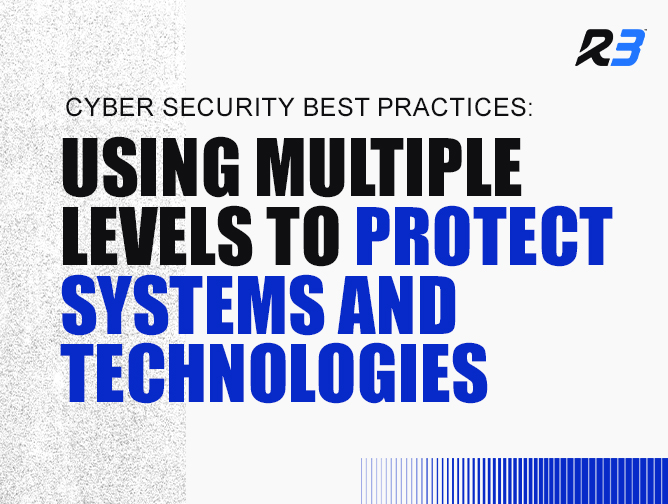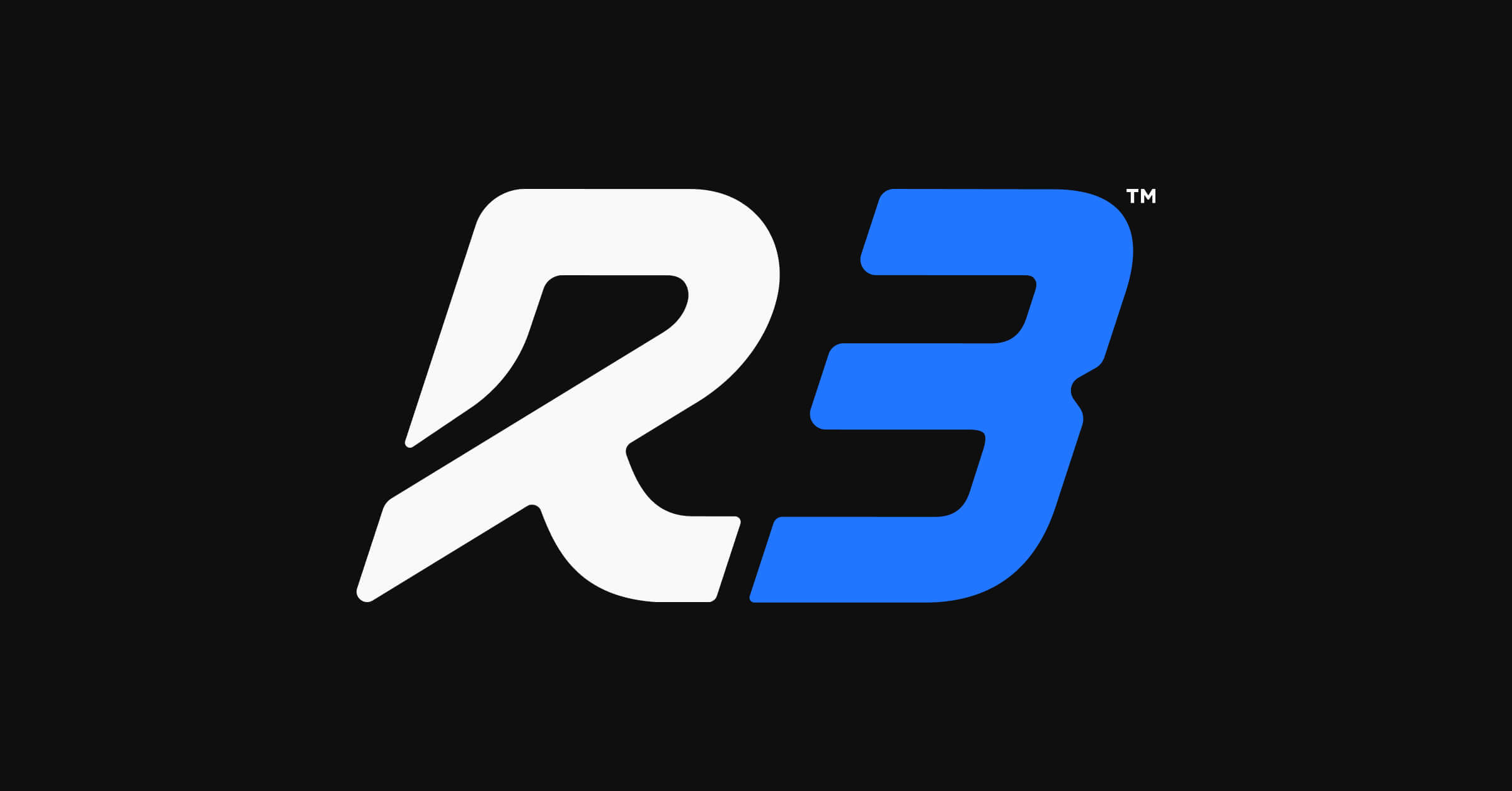Cyber Security Best Practices: Using Multiple Levels to Protect Systems and Technologies

Having a cultural mindset of security means having operational and functional plans and strategies for every potential vulnerability that poses a threat to your network and systems.
In this post, we’ll take a look at five common vulnerabilities, how hackers can access your systems by penetrating through each layer of protection, and how your business can ensure that doesn’t happen.
Hopefully, this won’t only underline the importance of why it’s important to have multiple technologies and safeguards in place to protect your business systems, but will also help you ensure your organization is fully protected if and when an attack or breach does occur.
The Cybersecurity Problem
According to Microsoft, the U.S. was the target of 46 percent of cyberattacks in 2020; that’s more than double any other country. What’s even more disconcerting is that 68 percent of business leaders feel their cybersecurity risks are increasing, while—on average—only five percent of companies’ folders are properly protected.
On top of that, 42 percent of companies are suffering from cyber fatigue—the apathy to proactively defend against cyberattacks. Which may be one of the reasons why 54 percent of companies say their IT departments aren’t sophisticated enough to handle advanced cyberattacks.
So how can you begin to review how your business fares in terms of cybersecurity? We recommend first looking at your company’s vulnerable points of entry and then establishing multiple layers of security.
Points of Entry
What are points of entry?
Points of entry are vulnerable areas where an attack begins, or the point at which a hacker or cybercriminal is able to infiltrate your organization’s infrastructure.
The most common entry points usually include employee email (think clickbait and fake links), mobile devices (cell phones and tablets), wireless networks (internet service, WiFi, a company website), servers (databases, applications, and file servers), cloud-based services (SaaS, Office 365, and Google Workspace), workstations (laptops and desktops), network hardware (hardware VPN, switches, routers, and firewalls), and third-party providers (SaaS providers, outsourced data centers, consultants, etc.)
Much like you’d plug a hole in a boat so no water can get in, or ensure your house’s windows and doors are all locked and secured from thieves entering, your company must secure each entry point to its infrastructure in order to ensure hackers can’t get into your system.
But how? Here are a few ways you can develop a multi-level security infrastructure.

Download 6 Common Cyber Attacks & How to Prevent them
Check out our free eBook on 6 Common Cyber Attacks and How to Prevent them.
The First Line of Defense: Email Security
Email is low-hanging fruit for most hackers. Why? Because your security is only as strong as your weakest link, and oftentimes the weakest link is your employees.
This is why it’s so important that you educate your team about network security and train them how to spot breaches, or attempts to breach the system (we’ll talk about this more in the next section).
This doesn’t mean they’ll have to learn the ins and outs of your firewalls or other high-touch security applications, because, as we mentioned, the most common point of entry to a company’s infrastructure—and what they’ll need to learn to protect first—is employee email.
In fact, according to Verizon, in 2021 nearly 40 percent of breaches featured phishing, an attack in which bad actors deceive people into revealing sensitive information or installing malware such as ransomware. In fact, Deloitte reports that 91 percent of all cyber attacks begin with a phishing email to an unsuspecting victim.
So what do you and your team members need to do in order to stop an attacker from infiltrating your system?
First and foremost, you need to make email security a priority. One way to do this is by implementing Multi-Factor Authentication (MFA) to prevent brute force tactics and password cracking technology. MFA is a fairly straightforward security tactic that requires a multi-step login process for users to access their accounts. In other words, users will need to provide information other than just their passwords. This additional information could include the scanning of a fingerprint, the inputting of a code sent to their phone number or email, or the providing of an answer to a secret question.
It’s also important that your employees know some other important phishing facts, like that the top malicious email attachment types are .doc, .dot (37 percent combined), and .exe (19.5 percent). Having such knowledge about your business’s security brings us to our next line of defense…
The Second Line of Defense: Security Awareness Training
Very much in line with ensuring your team members are informed when it comes to protecting their email accounts, security awareness training in all areas of your business can be a boon to everyone at your organization.
That’s because—and this is worth repeating—humans make mistakes, and that’s true when it comes to security too. In fact, the World Economic Forum reports that 95 percent of cybersecurity issues can be traced to human error. That’s right—many breaches end up coming from inside an organization, whether intentional or not.
This is one reason why many organizations implement a Zero Trust policy, a cybersecurity best practice that essentially assumes everything and everyone is compromised. The “never trust, always verify” mantra can mean that all or certain types of communication is encrypted, sessions are monitored, files are scanned, every login attempt uses some form of multi-factor authentication, least privilege access is utilized company-wide, and/or threats are met with a real-time response.
A Zero Trust policy is like a failsafe: If someone were able to break through your email security first line of defense, they won’t be able to get much further than that. Whether you decide to implement such a policy at your company or not, however, you’ll still need good security awareness training for your team so that they’re able to detect that a threat exists, as well as how to manage it.
Such training should start from day one: Not only should your onboarding process include a thorough educational module on everything cybersecurity related, you should also require that new employees be quizzed for their retention of those modules later on. Other training measures may include having simulations of phishing techniques to test your team’s ability to identify them, and/or what process they’ll use to manage a suspicious email.
Last but not least, it’s important to remember that security awareness training isn’t a one-off thing; it must be continuous in order to be effective, with refresher courses always available on-demand and required two to four times throughout the year. After all, as cybersecurity threats and types of attacks evolve and adapt, so should your people.
The Third Line of Defense: Network Firewall
Even after you’ve provided your team with some great, in-depth security awareness training, you’ll still want a good firewall in place in order to safeguard your network and systems. Firewalls allow certain types of traffic into the network and prevent others, helping manage vulnerabilities in the process.
Think of a firewall as the caulk you use to fix cracks and patch up holes around your house. By using such a sealant, the only way anything from outside can get into your home is through the front door, and that way you can see it walk in.
When choosing a network firewall, we recommend you pick one that has next-generation firewall (NGFW) capabilities. What does that mean? A next-generation firewall is part of the third generation of firewall technology that can be implemented in both hardware and software. It’s great for security because it can detect and block sophisticated attacks by enforcing security policies at the application, port, and protocol levels.
Here are some types of firewalls we recommend and a little bit about each:
- Azure Firewall: This cloud-native and intelligent network firewall security service provides threat protection, built-in high availability, both east-west and north-south traffic inspection, and unrestricted scalability for your cloud workloads running in Azure.
- Cisco Secure Firewall: The Cisco Secure Firewall reduces complexity and unifies policy across your hybrid and multi-cloud environments, uses automation to save time, and offers greater visibility and control while delivering efficiency at scale.
- Microsoft Defender Firewall: This firewall provides host-based, two-way network traffic filtering, blocking unauthorized network traffic flowing into or out of local devices.
- SonicWall Firewall: SonicWall next-generation firewalls provide security, control, and visibility for networks of all sizes and are designed to meet each company’s specific security and usability needs.
The Fourth Line of Defense: Endpoint Protection
If an attack were to penetrate your front lines, it can spread from one person to five and so on very quickly. How? It moves laterally, and from there can quickly get out of control. That’s why you need endpoint protection platforms to help you detect threats, stop things like malware from executing, and have a plan for widespread cleanup should something get through your defenses.
So, what exactly is endpoint protection? Endpoint protection, also known as endpoint security, protects computer networks that are remotely bridged to end-user devices (think mobile phones, tablets, laptops, desktops, etc.). It does so by securing the endpoints or entry points of those devices, thereby ensuring all devices are safe from being exploited by malicious actors, sophisticated malware, and other evolving threats.
Endpoint protection systems work to quickly detect, analyze, block, and contain attacks in progress by collaborating with other security technologies. This provides your team with real-time visibility into advanced threats, thereby increasing their detection and remediation response times.
The Fifth Line of Defense: Network Monitoring System
If all else fails, you’ll want a good network monitoring solution to be able to have a roll-up view of your environment. This will allow you and your team members to find anything that slipped through all of your other layers of defense.
A network monitoring solution, also known as a cloud monitoring solution, monitors a computer network’s overall health and reliability, spots red flags, and optimizes data flow. How does this work?
Network performance monitoring (NPM) solutions collect and analyze performance data to monitor Simple Network Management Protocol (SNMP), flow data, and packet capture and generate topology maps and actionable insights. This provides your team with complete visibility into application performance monitoring, network components, and other related IT infrastructure.
Why So Much Security?
Ultimately, no technology is foolproof, which is why you need to have holistic multi level cybersecurity checks and balances in place if one system fails. These many checkpoints and silos will prevent attacks from getting in at each stage, and if they do get through, then you’ll still be able to mitigate the attack with siloed access and solutions. Adversaries are always evolving, so it’s important to have multiple ways of stopping, preventing, and detecting them.
But remember: Managing and protecting your data is more complex than one system can provide. You need an entire cybersecurity ecosystem and cultural training to give yourself the best odds of protecting your company’s information.
However, we understand that protecting your data can be very complicated and time consuming—it’s a full time job and you have a ton of other priorities to manage outside of being mindful of potential attacks. Therefore, having an external team to manage your security landscape may be the most efficient and cost-effective way to ensure your business is—and stays—safe.
At R3, we’re a cloud-first Managed Service Provider (MSP) that’s dedicated to providing you with the most robust outsourced information technology management. We can work either as an extension of your existing IT department or serve as your entire IT department to provide a comprehensive suite of cyber security services that cover all of your organization’s needs. From threat detection and response to vulnerability management and compliance, our team of cyber security experts uses industry best practices and the latest technologies to protect businesses of all sizes and industries from cyber attacks. Now, it’s our turn to protect yours.
—
Interested in finding out how you can cross-check your business’s security measures with a team of trained cybersecurity professionals, defer risk if there is a breach, and partner with a company that has all the necessary credentials and certifications? Learn more about our full suite of services. Schedule a demo today to learn more.





